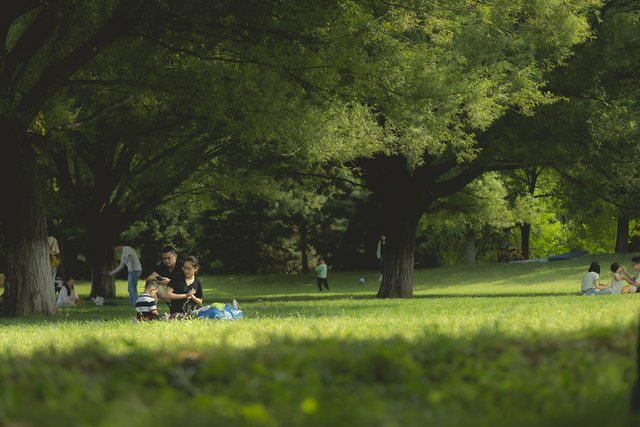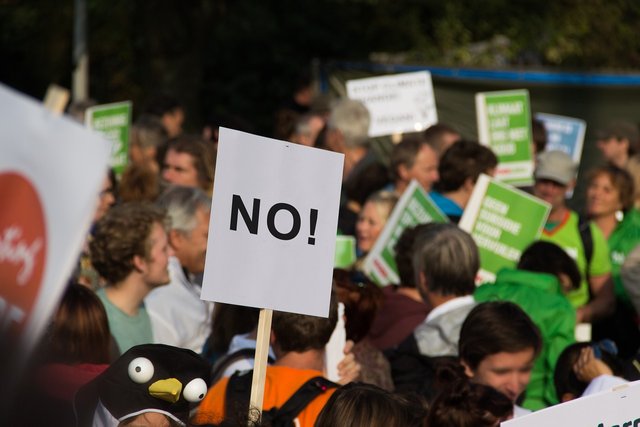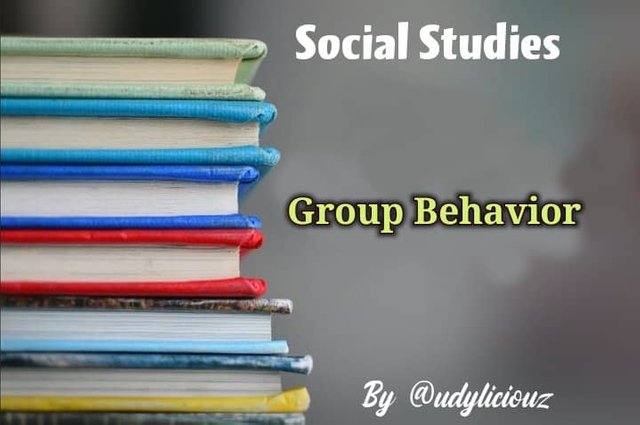Social Studies Lesson: Examples of Positive and Negative group Behaviours, thier Characteristics and Benefits of positive group behaviours
Welcome to class our dear and lovely kids. I had a great day and I believe your day went as planned. Last week, our lesson was on the meaning of group,
group behaviour and the examples of group behaviours. Our lesson today is on examples of positive and negative group behaviour and thier characteristics as well as the benefits of positive group behaviour. Please do well to carefully read through the lesson.
Examples of Positive/Constructive Group Behaviour
Examples of positive constructive group behaviour are as follows:
Positive Mass Action: This comprises of a number of people from every nook and Cranny of the society. It involves people from different religions and tribes. It is a heterogeneous group. Their activities are not destructive but meant to bring changes or provide support from government decisions.
Communal Labour: This is a group behaviour in which members of the community come together to carry out communal tasks. For example clearing of bush path to the village square, constructing drainage for easy flow of water or constructing public toilet for the benefits of community member.
Positive Crowd: A crowd is a temporary gathering of people brought together by some common concern or activity. Do there are crowds that are negative, they are also positive crowds. There are four types of crops whose behaviour could be positive or negative. Note that we are concerned with positive group behaviour in this section. Our discussion will examine only positive dimensions of the four types of crowd. These types of crowd are as follows:
i. Expressive Crowd: An expressive crowd openly shows the feeling shared by its members. For example, the reactions of spectators to the performance of their team on the football pitch, especially when their team records a goal is usually positive. This encourages the team to play better and win the match.
ii. Casual crowd: This is an accidental gathering of people seeking to achieve their individual goals at the same time and place. For example picnickers at the beach or shoppers at a shopping mall. They leave their home without informing other picnickers, nevertheless they meet fellow picnickers or shopper when they get to their destinations. They also take their leave without official notice.

Source Different groups of picnickers
iii. Conventional crowd: This crowd is made up of people who intentionally gather for occasions guided by established norms and beliefs. For example are worshippers who come together for religious services in church, Mosque and/or shrines.

Source Group of people gathering for a religious purpose, an example of conventional crowd
iv. Acting crowd: The acting Court consists of a group of people who act on a particular target or individuals with the goal of bringing about change. An example of an acting crowd is a group that gathers at an accident scene to rescue victims.
Characteristics of Positive/Constructive Group Behaviour behaviour
The characteristics of positive group behaviour are as follows:
- Members may not necessarily know one another.
- Behaviour is arose through imports at times.
- Actions are not premeditated in most cases.
- Its goals are positive.
- Goals are achieved in most cases.
- Constituted authorities are often respected.
- Destructive action is not Common.
- Harmful objects are not employed.
Examples of Negative/Destructive Group Behaviour
Examples of destructive/negative group behaviour are as follows:
- Protest: It is the expression of strong opposition or Disapproval of something in the society. For instance, when a group of people take to the streets to disapprove of government policies. In most cases such protests results in destructive of lives and Property. This is not good for the Citizens.

Source Group protest, an example of destructive group behavior
Mob Violence: This is an angry crowd that act in a way that is unacceptable by the society. Their actions are usually directed towards individuals other groups or property. Such aggressive act include looting, lynching and arson.
Riot: This is another type of violent more action. Riot could be planned or spontaneous (that is unplanned). It is associated with unruly and uncontrolled behaviour which leads to the destruction of property and loss of lives. During a riot there is s no define labour, no instruction, no command or supervision from anybody. Everybody act on a sudden strong desire to do something. For example when university students are agitating for a reduction in school fees charged by the university management, such action can get out of control and lead to the closure of such University. Thus rioting is not a good thing.
Demonstration: This is an expression of public feelings by a crowd in favour of or against the program, policy or decision. This is Express through obvious actions such as matching through street with placards, banner, t-shirts, stickers and so on. Most demonstrations are directed toward government. An example of mass demonstration is the one that took place in January 2012 in Nigeria, when the government decided to remove fuel subsidy, in effects increasing the price of petrol.
Characteristics of Negative/Destructive Group Behaviour
The characteristics of negative or destructive group behavior are as follows:
- Members may or may not know one another.
- Behaviour could be aroused through impulse at times.
- Actions are spontaneous (sudden)in most cases.
- Destructive action is common.
- Constituted authorities are not respected.
- Harmful objects are employed in their activities.
- Group often disbanded after the action.
Benefits of Positive/Constructive Group Behaviour
Positive/constructive group behaviour holds many benefits in the society. Some of these benefits are as follows:
Companionship: Positive /constructive group behaviour encourages friendship. Members of the community who are involved in positive group behaviour see each other as one. They see their leaders or people in positions of authority as part of the community. That is why they choose to resolve issues through dialogue and roundtable discussions.
Survival and security: The activities resulting from positive group behaviour do not threaten members of the community. They are often after the progress and welfare of their members. The embrace peace not violence. Their activities encourage peaceful coexistence and guarantee safety in the society.
Affiliation and Status: Positive social behaviour encourages companionship and relationship. For instance, when members of a community come together for communal assignments, they interact with one another. This strengthens the unity and relationship among members. Such exercises might even be an opportunity to developing a relationship with other community members.
Power and Control: There is strength in unity of purpose. When people come together in unity to achieve certain objectives in the interests of members of the community, they are strengthened. It is easier to exercise power where people are probably coordinated, unlike what happens in negative group behaviour.
Achievement: it is easier to realise a set objectives in positive group behaviour. The reason is that the group is coordinated and focused. Since the aim of the group is not to destroy property and lives, they make necessary plans towards the achievement of their goal within the shortest possible period of time.
Homework task
- State three characteristics of positive group behaviour.
- State three characteristics of negative group behaviour.
- Mention four benefits of positive group behaviour.
- List and explain three examples of positive group behaviour .
- List and explain three examples of negative group behaviour.
Rules
- You must be a verified kid (No parent assistance)
- Your homework post should be at least 300 words.
- Post in steemkids Community and set aside at least 10% beneficiary to @steemkidss.
- You must belong to any of these clubs, club5050 club75 and club100
- Use the hashtags 'steemexclusive, yourcountry, and your club status as part of your hashtag.
- Drop your entry link at the comment section.
All participants who perform well will be rewarded.
Cc
@steemkidss
@ngoenyi
@goodybest
@eliany
Please participate in the homework task.
@tarazona14 @esha2006 @leyxi209 @ghani12 @deben @amjosh9 @dorismos @yeri52 @david-o viviandaniella @fortwis09 @ibtisamwaqas @ijeoma345 @samuelsteemit @madilyn02 @genebcm @ahbaz @darrenjord @juandrodrig14 @mvalentina @geoscary21 @fabianeg @rmp20 @anthony27 @nuella03 @renrimaiki @graciousgrace16 @jesuskids
@rita-o @smartangel @jedny222 @konami09 @rhema01
Written by @udyliciouz

wow indeed this is so so nice see you in my assignment I promise to submit it ma thanks for adding more knowledge
Congratulations, your post has been supported by @steem4nigeria. This is the official community account of Nigerians on Steemit. You can reach us here on our community account.
Discord Facebook Twitter
...and nobody doubts the given discriminations?
Hummm...
Here is my Entry 👇
https://steemit.com/hive-139765/@edidiongeffiong/homework-task-on-social-studies-group-behavior-by-edidiongeffiong